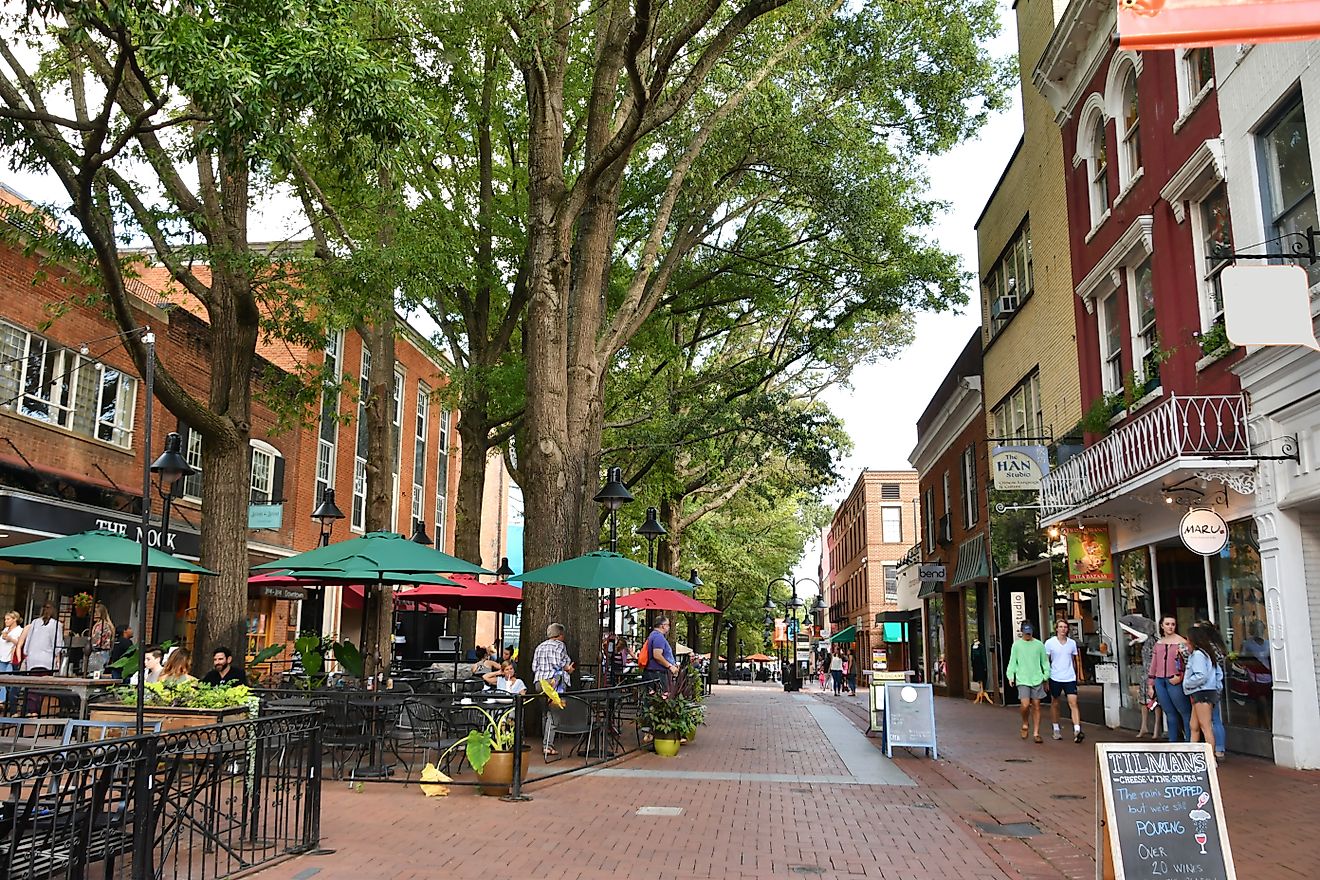
Natchez, Mississippi
Natchez is a small city situated in Adams County in the U.S. State of Mississippi. The city is located along the Mississippi River and bridged to Vidalia, Louisiana. In the antebellum years, Natchez served as a prominent city and a center of cotton planters and the Mississippi River trade. Today, the city is home to almost 14,000 inhabitants and has a branch of Copiah-Lincoln Community College and Natchez College. Every year, it holds the month-long Natchez Opera festival in May.
Geography Of Natchez

Natchez is located in the southwestern part of Mississippi, along the Mississippi River across Vidalia in Concordia Parish, Louisiana. The city is situated approximately 110 km southwest of Vicksburg, 137 km north of Baton Rouge, and 140 km from the state capital - Jackson. Being the state's 25th largest city, Natchez covers a total area of 36 sq. km, of which 34 sq. km is occupied by land, and 1.6 sq. km is occupied by water.
The Climate Of Natchez
According to the Köppen Climate Classification, Natchez experiences a humid subtropical climate characterized by long, hot summers and short, cold winters. Summers are usually much wetter than winters. The warmest month is July, with an average high temperature of 32.7°C. The coolest month in Natchez is January, with an average low temperature of 4.4°C. The city receives an average of 1435.1 mm of precipitation per year.
The Population Of Natchez
In 2020, Natchez had 13,961 people with a median age of 42.2 and a population density of 356 inhabitants per square kilometer. The population of Natchez has decreased by -11.59% since the last census, which recorded a population of 15,792 in 2010. The largest ethnic groups in Natchez are Black or African Americans and represent 63.8% of the city's population, followed by White, most of whom are considered non-Hispanic, at 33.9%, then comes Two or more races at 1.31%, Asians at 0.76%, and Native Americans at 0.23%. About 99.7% of the residents in Natchez are U.S. citizens, and all households speak English as their primary language.
The Economy Of Natchez
In 2019, the median household income in Natchez was $26,443. The city is currently declining at a rate of -1.54% annually and has a poverty rate of 34.6%. Although the income inequality in Mississippi (measured using the Gini index) recorded 0.445, which is comparatively lower than the national average, the males have an average income that is about 1.4 times more than the average income of females. The economy of Natchez employs almost 5,000 people in different industries, with the largest ones being Health Care & Social Assistance, Retail Trade, and Educational Services. The highest paying industries in Natchez are Mining & Oil & Gas Extraction, and Real Estate & Rental & Leasing.
Brief History Of Natchez

Jean-Baptist Le Moyne de Bienville established Natchez in 1716 as Fort Rosalie. It survived a massacre in 1729 carried by the Natchez Indians for whom it was later named. In 1763, it passed from France to England after the French and Indian War and acted as a shelter for loyalists during the American Revolution. A Spanish expedition captured the town in 1779 under Bernardo de Galvez, and it remained under Spanish domination until 1798, when the United States took possession and made it the first capital of the Mississippi Territory between 1798-1802. Years later, the town prospered as the commercial and cultural center of a vast and rich cotton-producing area and became the southern terminus of the Natchez Trace, an overland trail from Nashville in Tennessee, which nowadays is called Natchez Trace Parkway. The town also served as an important river port due to its strategic location on the Mississippi River. During the American Civil War, Natchez was bombarded by a Union gunboat and was occupied in July 1863. The town recovered from its post-Civil War decline to become one of the state's leading industrial centers. The House on Ellicott's Hill, an inn built about 1798, was the gathering place for adventurers who traveled the Natchez Trace or sailed the river.
Tourist Attractions In Natchez

The riverside city of Natchez is famous for its beautifully restored antebellum mansions and historical museums such as the Auburn Museum & Historic Home, Rosalie Mansion, Magnolia Hall, and Monmouth Historic Inn. The city also has many cultural sites and scenic parks.
Auburn Museum & Historic Home
The Auburn Museum & Historic Home is one of the top tourist attractions in Natchez. It is an antebellum mansion and National Historic Landmark in Duncan Park. It was designed and constructed in 1812 by Levi Weeks and was the first significant building in Natchez to follow an actual architectural plan, and was constructed in the Greek revival order. After the Civil War ended, several Natchez homes emulated the style of Auburn's facade. The mansion features a prominent two-story Greek portico and a magnificent spiral staircase that stands entirely unsupported. There are also several antiques and period pieces on display. The Guests can explore the place on guided tours and browse the gift shops.
Emerald Mound Site

Designated as a National History Landmark, the Emerald Mound Site is also a popular tourist attraction. It is an ancient archaeological site dating back to the Plaquemine culture Mississippian period and one of North America's most enormous mounds. It is situated on the Natchez Trace Parkway near Stanton and dates back to between 1200 and 1730 AD.







